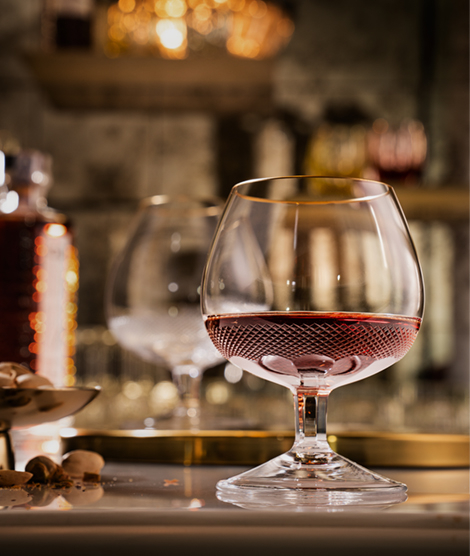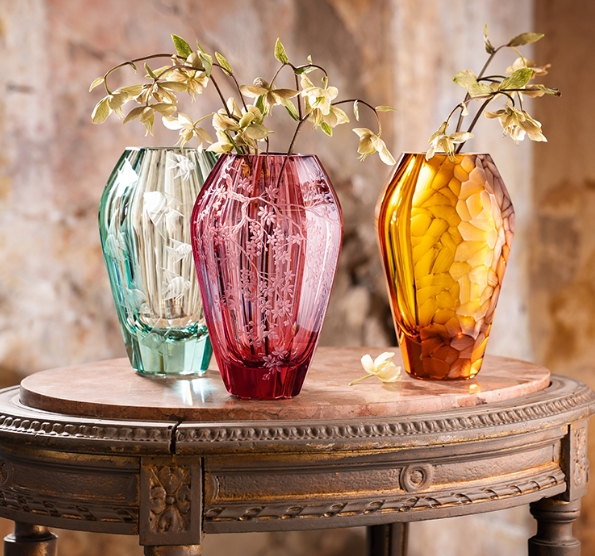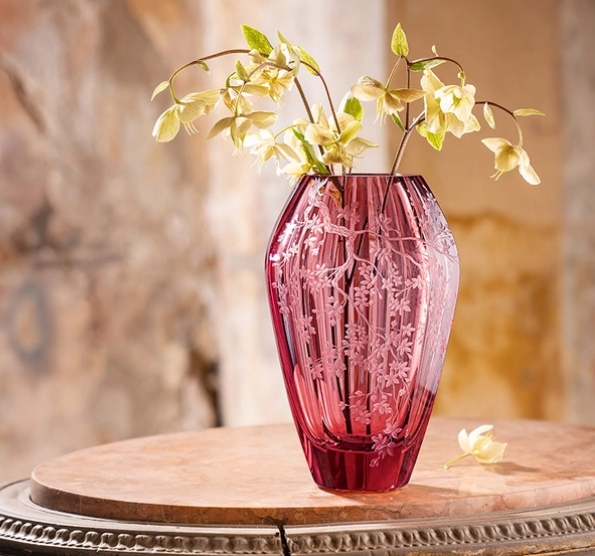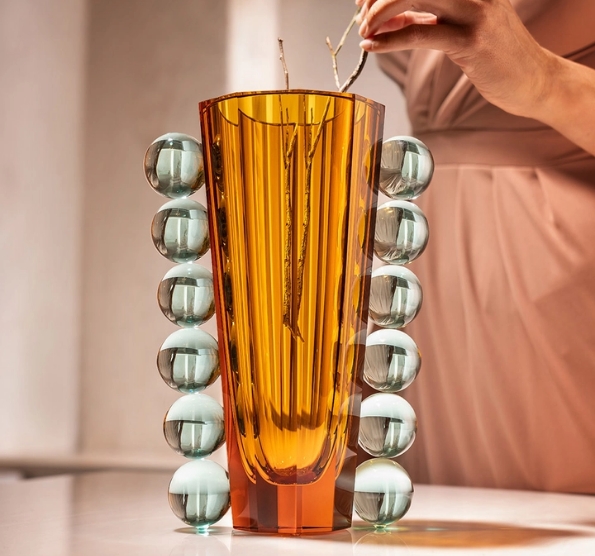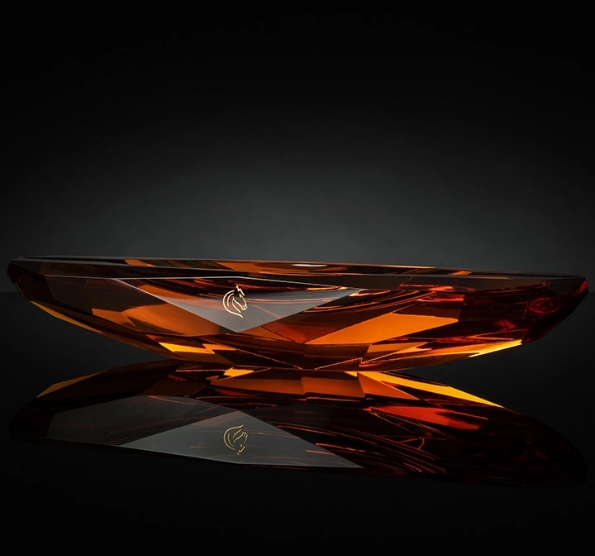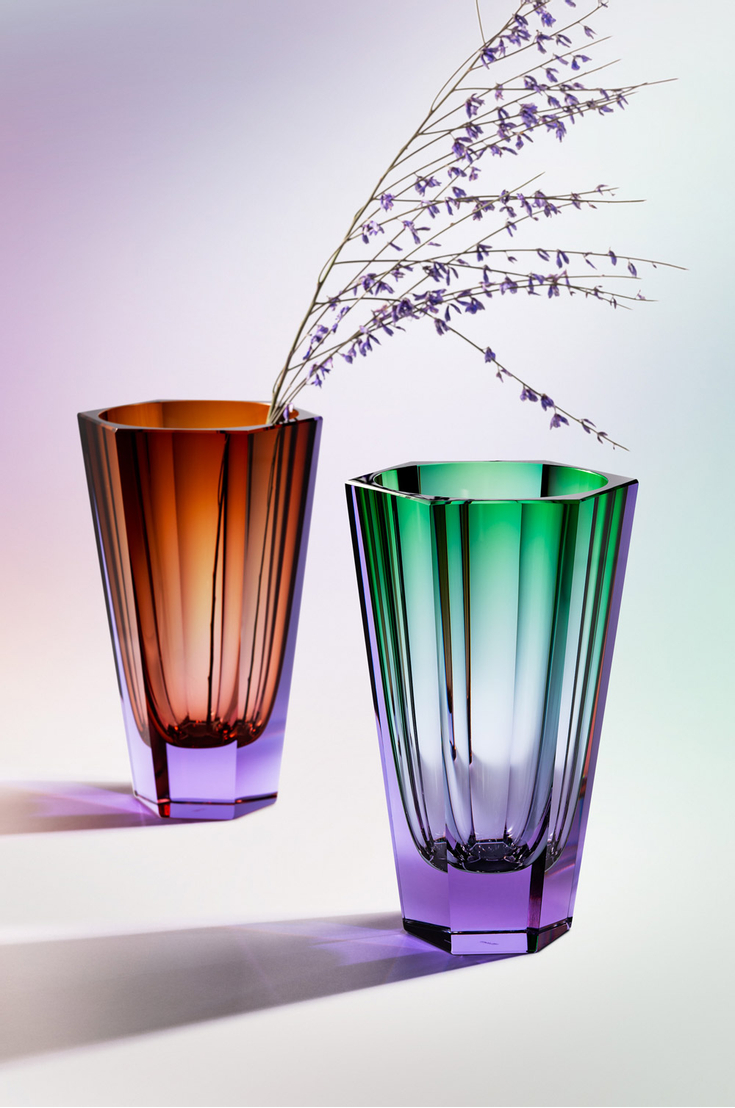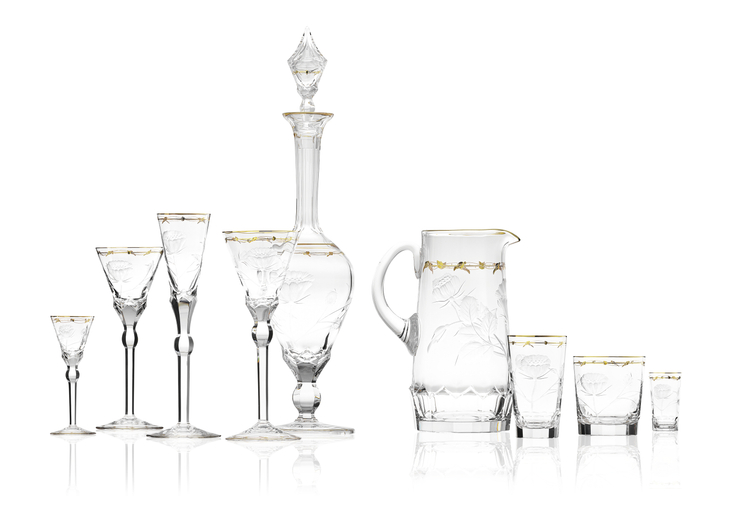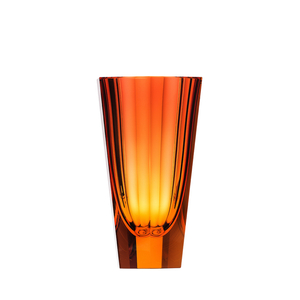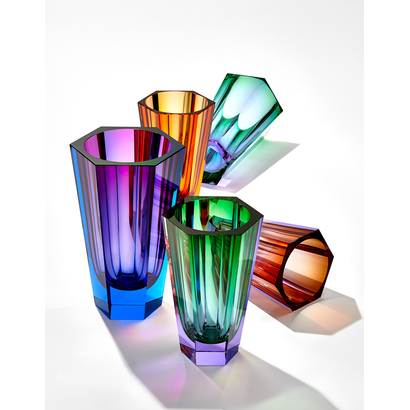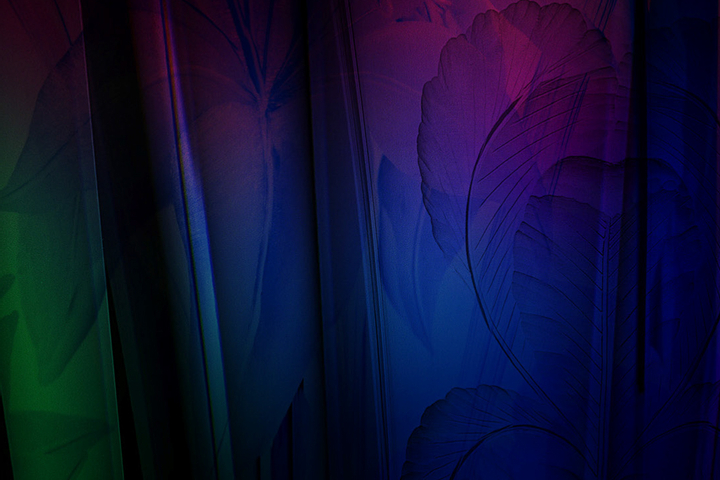
Breadcrumbs navigation
- Home page
- About Moser
- Blog
- Leo Moser
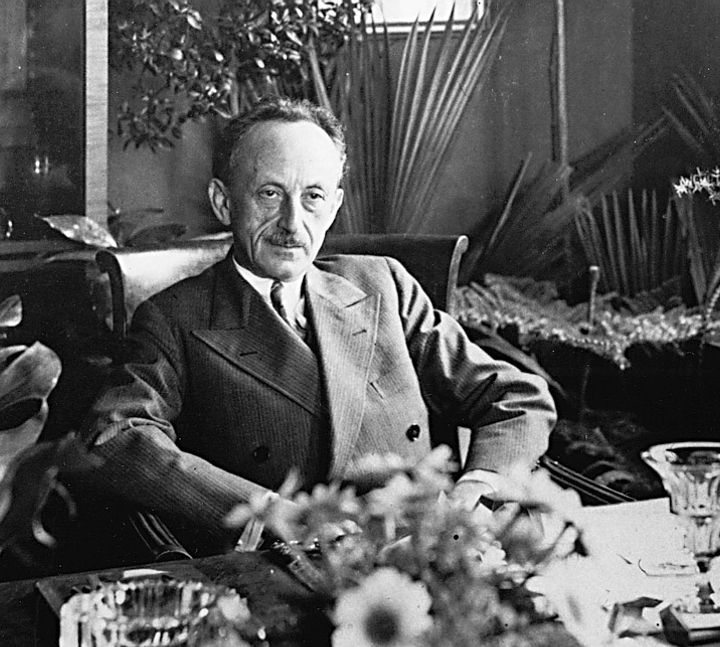
Leo Moser
Moser is known for its stunning colours that especially stand out in its hand-cut glass. Colours whose hues change depending on the sun or artificial light, and their intensities. The glassworks has Leo Moser to thank for these colours. During his long life, he experienced highs and lows, as well as a fight for his very survival.
Ninth out of ten
Leo’s father, Ludwig Moser, founder of the glassworks, had ten children within two marriages. Leo was his second-to-last. He was born on 1 June 1879 in Karlovy Vary, and his mother, Julia, was Ludwig’s second wife, the daughter of the local physician. Since childhood, Leo watched his father work in his engraving workshop.
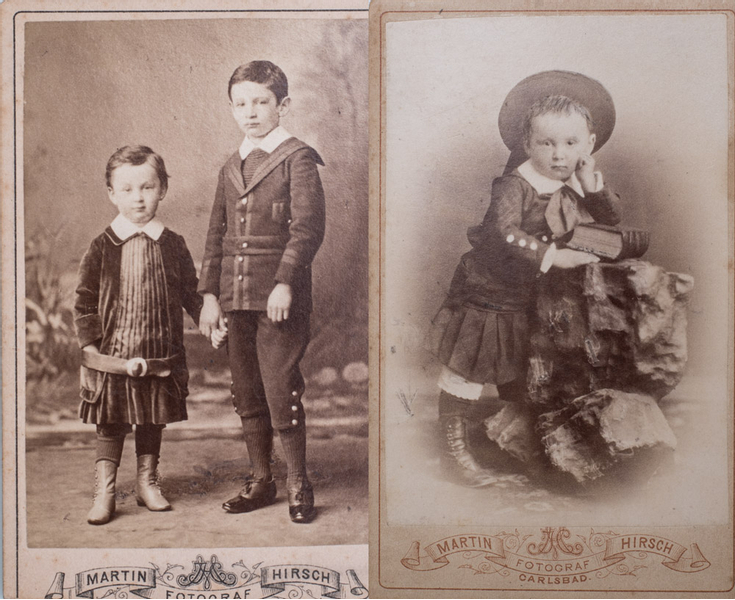
Leo Moser with his older brother Gustav (circa 1885)
Fascinated with glass
In 1893, Ludwig Moser had his own glassworks built on the outskirts of Karlovy Vary in the Dvory neighbourhood. Leo was 14 then, and it was here that he spent most of his free time. He frequented the furnaces, where he watched how the molten glass was prepared, how the glassmakers would take it out on their blowpipes, and breathe it into shapes of all kinds. He also observed the form makers who created the moulds by hand from beech and pearwood, and peered under the stencils of the designers, sketching new vases, glasses, and carafes. When he turned 18, his father took him to the World’s Fair in Brussels, where he saw with his own eyes the glass creations from around the globe. He told himself that the products from his family’s glassworks would have their place amongst them. Three years later, in 1900, he attended the World’s Fair in Paris, where the Moser glassworks amazed everyone present with its lightly coloured, Art Nouveau vases with floral engravings.
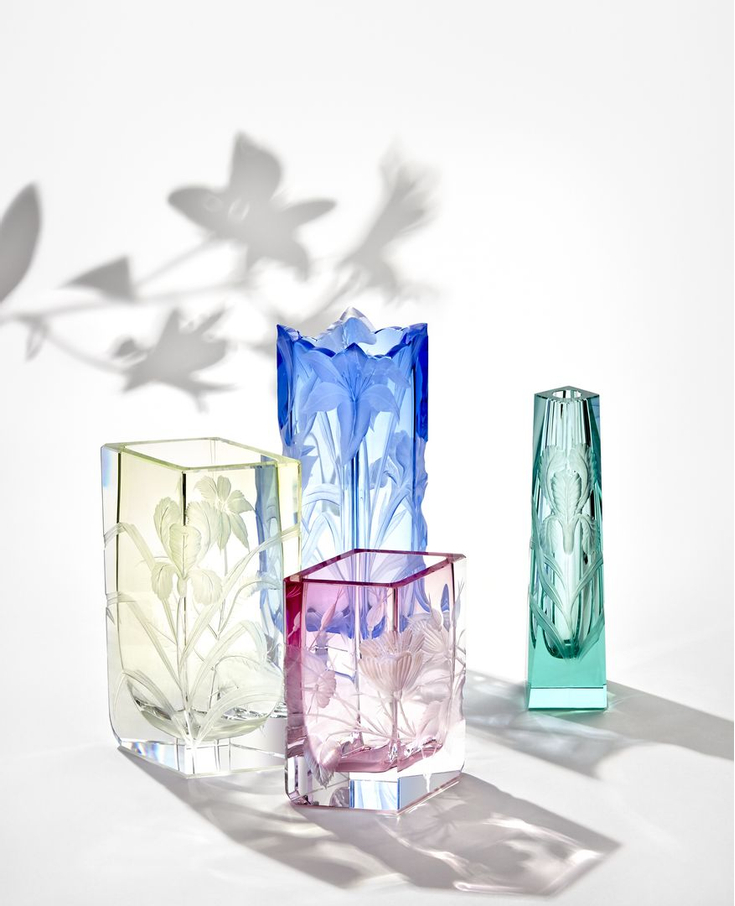
Paula
Leo lived for glass, following worldwide trends and premier designers, and taking an interest in coloured glass development. With his father’s trust and at the age of 29, he assumed the role of the glassworks Technical Lead in 1908. Four years later, he married 22-year-old Paula Münsterová, who, unfortunately, we know little about. She was born in Milan, but we are unsure how the two met. They lived together in Karlovy Vary, where their daughter Lya was born in 1916 and their son Thomas in 1920. Today, Paula lives on as a permanent reminder – the most celebrated of Moser’s Art Nouveau drinkware collections is named after her, which the Moser glassworks has kept in production since 1902, originally called Rose. It’s one of Moser’s greatest gems; hand-decorated with an engraving of rose stems with petals and flower buds, a gilded engraving of two interwoven vines with leaves and thorns, and six facets cut into the stem of the glasses. Thanks to its timeless beauty, Paula is beloved by Queen Camilla, wife of King Charles III of England.
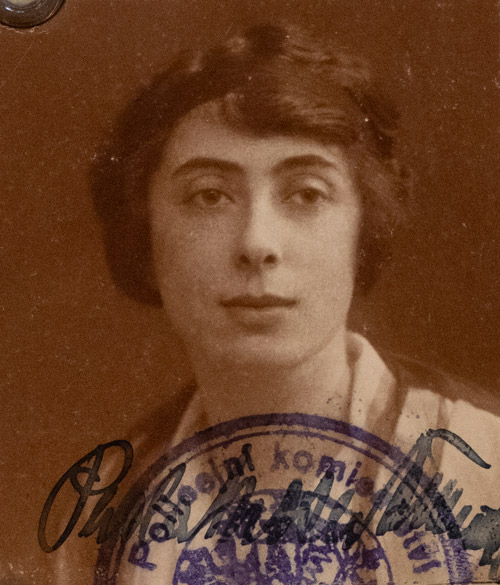 Paula Moserová (Münsterová)
Paula Moserová (Münsterová)
His father’s successor
In 1916, at the height of WWI, Moser’s founder, Ludwig, passed away at the age of 83. Leo Moser assumed his father’s mantle, leading the glassworks’ artistic direction alongside his position as Technical Lead. His brothers Richard and Gustav also became co-owners. In 1919, Leo secured a patent for ‘Oroplastique’ – an etching, gilding, and polishing method of decoration, using agate and creole to adorn drinkware sets, vases, and bowls.
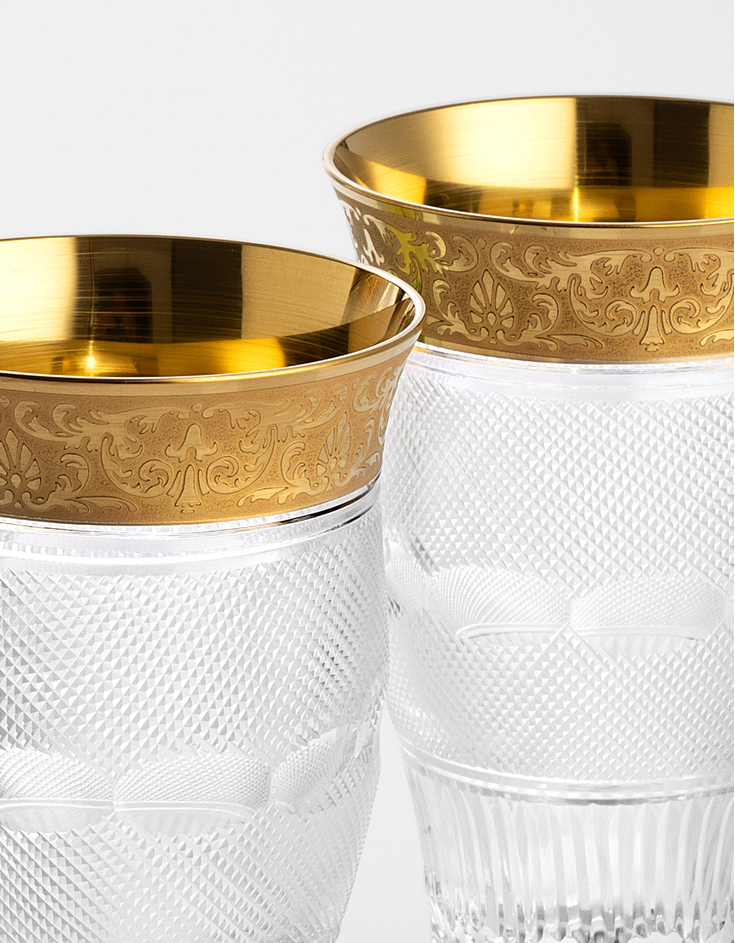 Splendid drinkware collection with gold oroplastic
Splendid drinkware collection with gold oroplastic
In 1921, a 42-year-old Leo Moser had the glassworks’ building renovated. The project lead was 39-year-old architect Rudolf Wels, a pupil and coworker of Adolf Loos. The reconstructed glassworks, which employed 1000 people at that time, became the largest and modernest glassworks in Czechoslovakia. Rudolf Wels, a talented designer in his own right, settled in Karlovy Vary for several years, designing vases and bowls for Moser with their own oroplastic decorations (e.g., the Animor and Hyalith series).
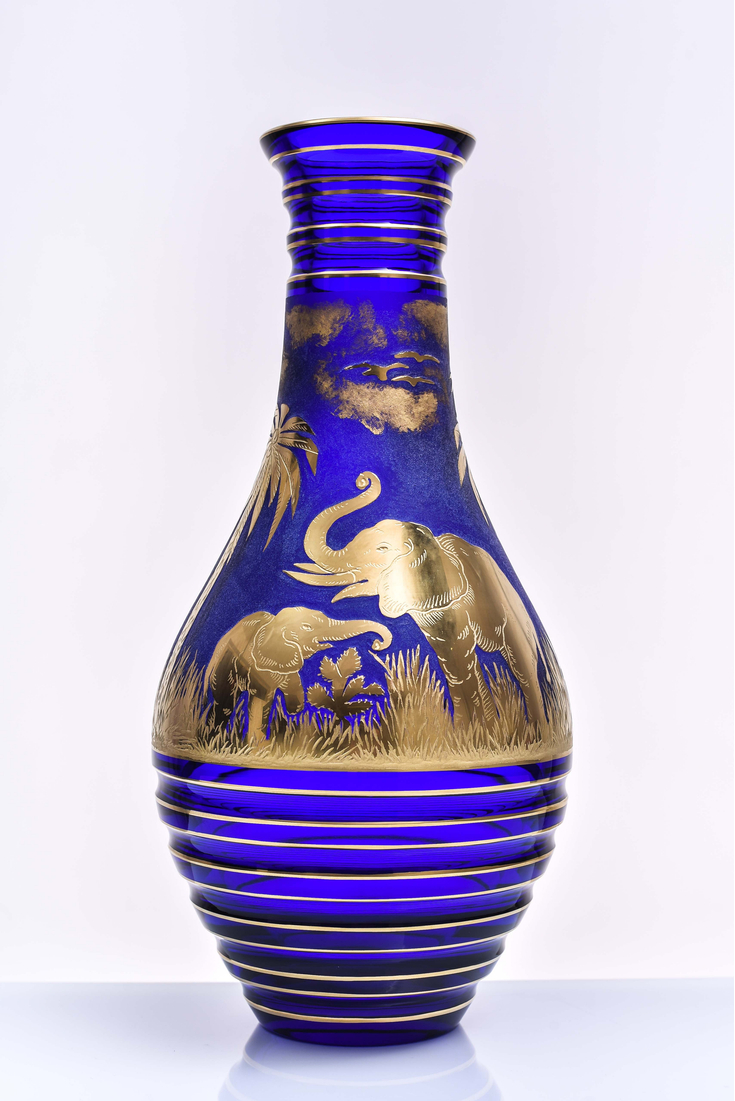 Animor vase
Animor vase
Colours named after gemstones
Leo Moser wanted to offer something new and saw an opportunity in coloured molten glass. He took great interest in their development, initiating the process himself. At the Corning Museum of Glass, the largest American glass museum, Leo’s notebooks were respectfully preserved, where he recorded his attempts to create new coloured glass. He also worked together with scientists from Technical University Berlin and Berlin’s Kaiser Wilhelm Institute for Silicate Research. His notes and correspondence make it clear that the path of discovering new molten glass was anything but simple. However, after many test smeltings, attempts, and mistakes, they managed to achieve an incredible result. They arrived at a sort of rare-earth-doped glass that Leo named after gemstones and semi-precious stones. The crystal products made of this glass stand out with their extraordinary properties – their tones and reflections are ever-changing depending on the type and intensity of light. In fact, the Brilliant Color exhibit at the Museum of Glass in Corning (HERE) illustrates the various hues achievable under differing light shone on one of Leo’s colours: alexandrite.
Amy J. Hughes, author of a study about Leo Moser, wrote the following: “He reworked the product lines and created new glass shapes that reflected the trends and styles of those days, thus altering the company’s artistic production. He adopted design elements in the Art Deco style, such as distinct colours and shapes that express motion, speed, and dynamism.”
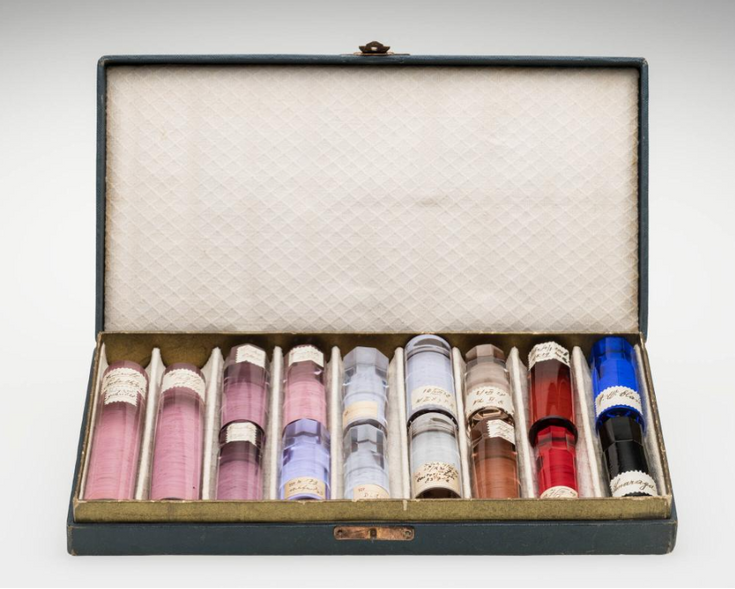
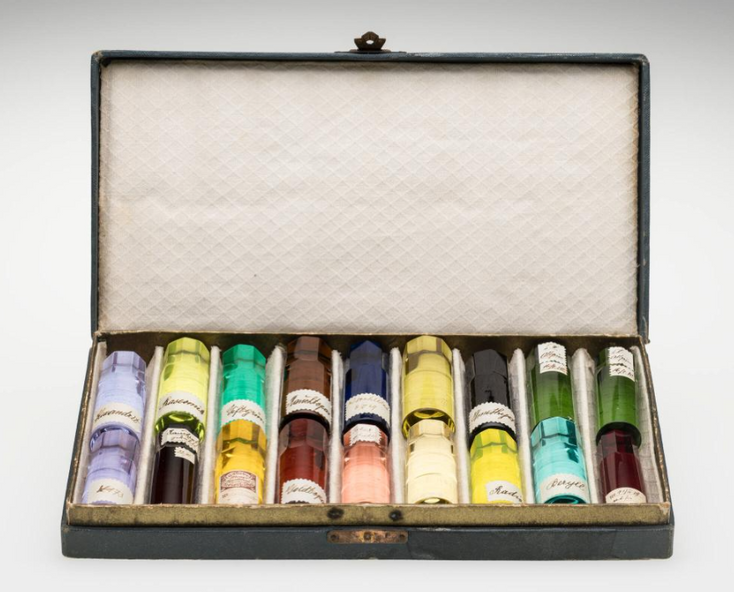
Samples of the Moser colours taken into exile by Leo Moser. He later gifted them to the Museum of Glass in Corning, USA.
Fighting for his life
Like those of so many others, Leo Moser’s life was turned upside down by the Holocaust and WWII. In 1938, he sent his wife and 18-year-old son, Thomas, to the USA, and later fled together with his 22-year-old daughter, Lya, to France, where he served as a technical consultant at the Cristalleries (glassworks) in Saint-Louis. Under dramatic circumstances, he was then forced to flee to the USA as well. They set sail on 15 January 1940 from Marseille, where a journey full of hardships awaited them on the ship Alsina. Historian Mečislav Borák documented these events, and it’s thanks to him that we know other Jews from the former Czechoslovakia were also aboard. For instance, Karel Roth, GM of “Filip Haas and Sons”, who owned the oldest department store in Prague, incidentally located near Moser’s flagship store at Na Příkopě, was on board. Jan Sborowitz and his family also embarked on this journey, the former owners of a famous clothing company in Prostějov, the co-owner of a cannery in Žatec, Max Melzer, with his wife and daughter, and an 18-year-old Eliška Löw-Beer from the well-known family of Brno textile industrialists. The ship was held up at multiple points, starting in the port of Dakar for over four months, then in Casablanca, where the majority of passengers were forced into internment camps with horrendous hygienic conditions and widespread illness. Leo’s wife, Paula, put in an enormous and desperate effort from the USA to help the refugees. She interceded everywhere possible on their behalf, contacting international organisations, diplomats, and prominent politicians, even asking the president’s wife, Eleanor Roosevelt, for help.
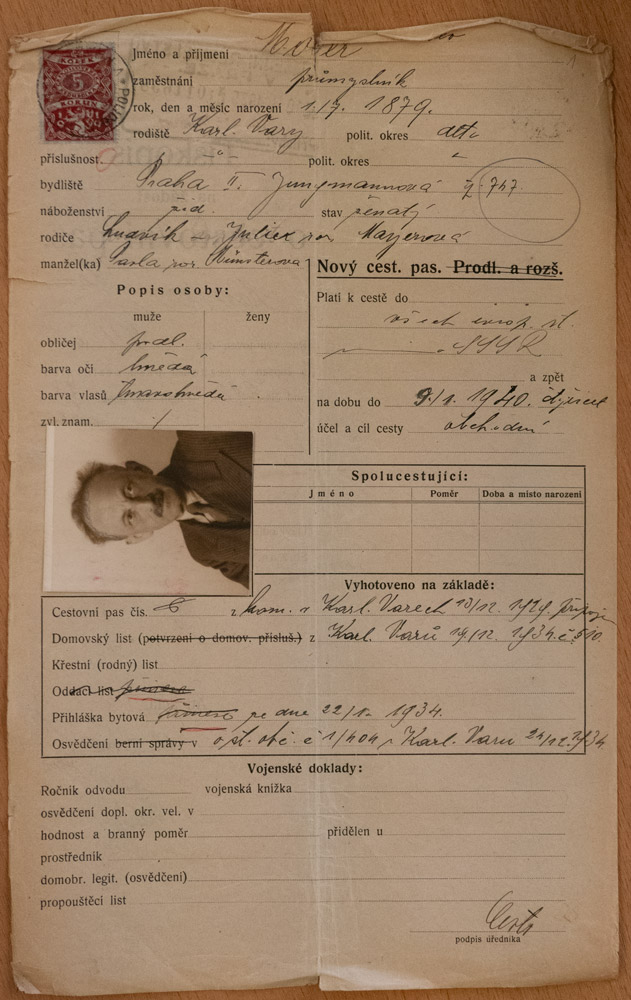 Leo Moser’s passport request
Leo Moser’s passport request
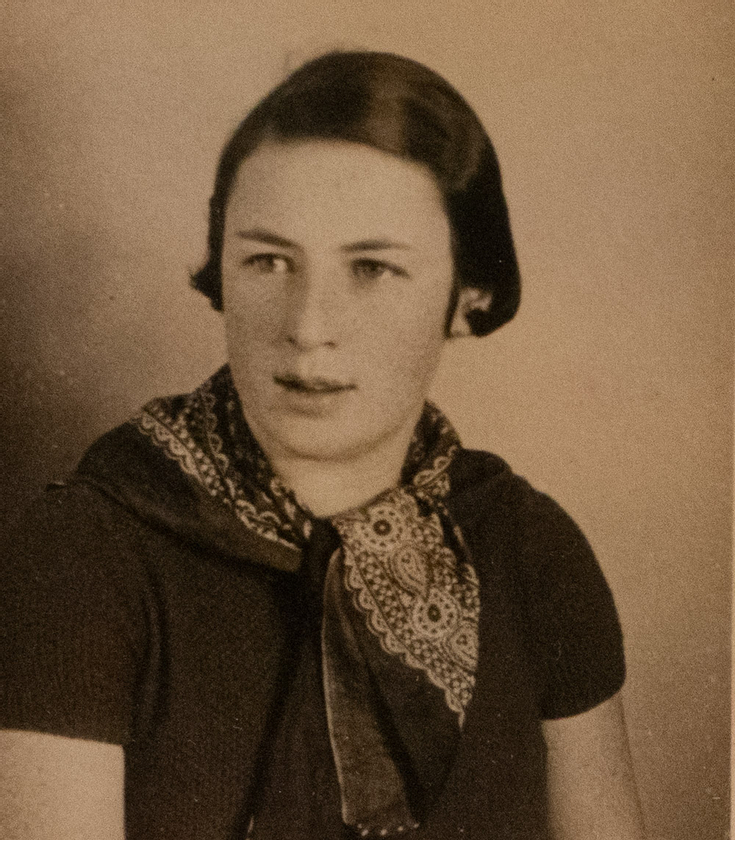
Lya Moserová, daughter of Leo Moser
Rudolf Wels
Leo Moser and his daughter Lya were fortunate, eventually managing to escape to America. Rudolf Wels, the architect who designed the glassworks renovations at Leo’s request as well as glass products for the brand, didn’t make it to safety in time. He, his wife Ida, and their 19-year-old son Martin were murdered in a gas chamber in the Auschwitz-Birkenau extermination camp as part of a so-called “family camp” termination overnight from 8 to 9 March 1944. During this unthinkable evening, the Nazis murdered 3792 Jewish men, women, and children. This marked the largest mass killing of Czechoslovaks during WWII.
Leo Moser was fortunate to live a long life, passing away on 28.11.1974 in New York. He was 95 years old.
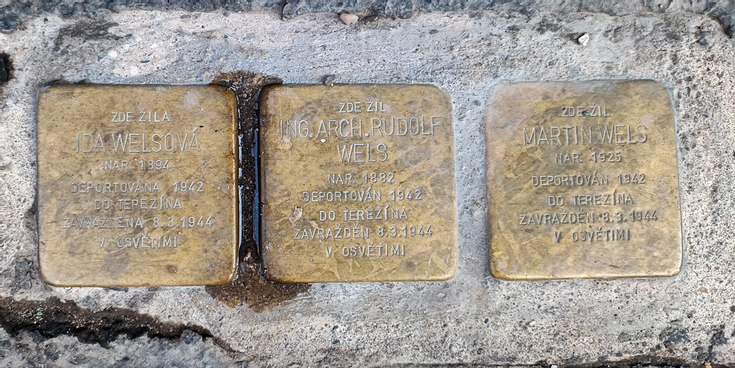
Wels family stumbling stones (Prague, Letná)
